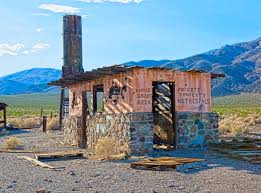
Posted on 10/18/2019 8:20:52 PM PDT by BenLurkin
Those earthquakes were the first major temblors to occur near the Garlock since scientists began taking records decades ago, meaning it's the first time movement -- also known as creeping -- has been detected along the fault line, according to seismologist Zachary Ross. “The Ridgecrest earthquakes initiated this movement on this Garlock Fault," he said.
The study found that the sequence increased strain on the 160-mile-long fault, which spans the Mojave Desert and is capable of producing a devastating magnitude 8.0 earthquake.
Orbiting radar satellites recently picked up the movement along the Garlock and acquired before and after images of the event.
Those images showed the ground moved approximately 2 centimeters over a fairly large area, according to Ross, who is also a geophysics professor at Caltech. As a result, the northwest side of the fault is moving closer to the Pacific Ocean, while the southeast side is moving toward Nevada, he said.
Though it may sound alarming, experts said such movement is "not unprecedented" along Southern California faults. “We’ve seen that happen repeatedly over the years, but we’ve never seen the Garlock do this before," Ross explained. "That’s what makes this surprising.”
(Excerpt) Read more at ktla.com ...
“The Garlock Fault marks the northern boundary of the area known as the Mojave Block, as well as the southern ends of the Sierra Nevada and the valleys of the westernmost Basin and Range province. Stretching for 250 kilometers (160 mi), it is the second-longest fault in California and one of the most prominent geological features in the southern part of the state.
“The Garlock Fault runs from a junction with the San Andreas Fault in the Antelope Valley, eastward to a junction with the Death Valley Fault Zone in the eastern Mojave Desert.
…
“The last significant ruptures on the Garlock were thought to be in the years 1050 AD and 1500 AD. Research has pinned the interval between significant ruptures on the Garlock as being anywhere between 200 and 3,000 years, depending on the segment of the fault.[3] The most recent notable event in the Garlock Fault Zone was a magnitude 5.7 near the town of Mojave on July 11, 1992.[4] It is thought to have been triggered by the Landers earthquake, just two weeks earlier.
“However, no surface slippage of the fault itself had been recorded in modern times until 2019. Following a series of earthquakes on nearby minor faults in late July 2019, the Garlock Fault was observed moving about 2 cm (0.8 in)[5] between July and October accompanied by numerous minor earthquakes, a state known as fault creep, and producing a bulge in land observed by satellite radar images.”
https://en.wikipedia.org/wiki/Garlock_Fault#Geology
Everything that can happen eventually will. The longer we watch, the more we notice.
If the big one happens will it cause the power to come back on?
bookmark
I’m in San Diego right now until Monday afternoon. If things could hold off until later that day, I’d be cool with it.

Professor Tom Jones of the USGS said “it’s not unusual”.
CC
I see what you did there - our younger Freepers might not ;-)
Disclaimer: Opinions posted on Free Republic are those of the individual posters and do not necessarily represent the opinion of Free Republic or its management. All materials posted herein are protected by copyright law and the exemption for fair use of copyrighted works.